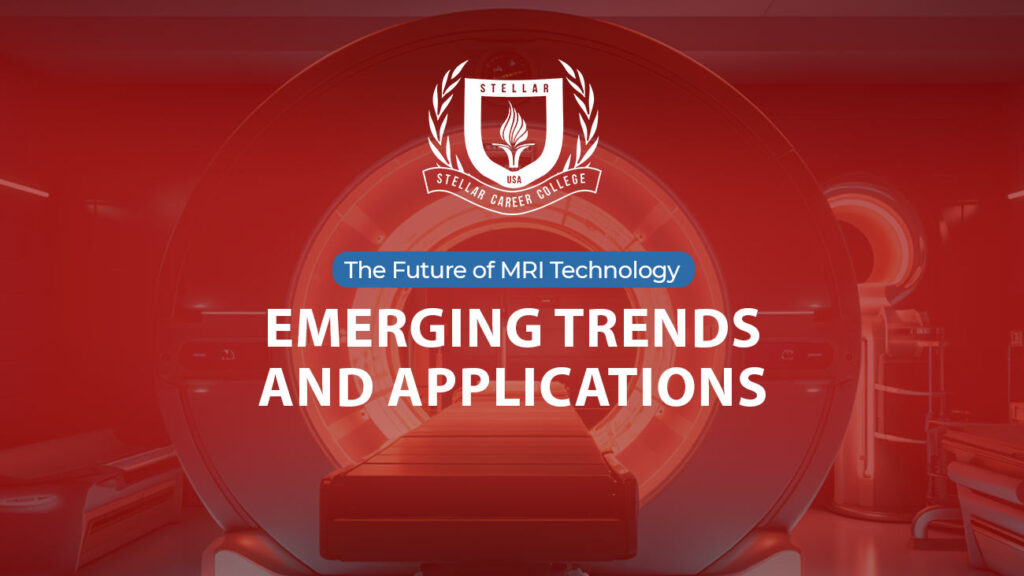The Magnetic Resonance Imaging (MRI) field is cited as one of the most significant and beneficial medical developments. Its inception dates back to the early 1970s when Raymond Damadian invented the first MRI scanning machine. The impact of this field has been visible till now. Magnetic resonance imaging has become an invaluable tool for doctors, surgeons, clinicians, and researchers alike to generate non-invasive images of the human body’s internal structures.
Over the decades, MRI has seen various advancements, such as better receiver coil arrays, powerful reconstruction computers, digital receiver technology, and improved patient comfort systems. Undoubtedly, its future holds certain chances of more developments.
This article encompasses emerging imaging trends and why one should choose MRI technology programs for a secure career.

An Aerial View of the Evolution of the MRI Field
Since its inception, MRI technology has come a long way, passing through technological advancements, innovations, and improved diagnosis techniques. The nuclear magnetic resonance procedures that once started with rudimentary machines generating low-resolution images are now more powerful and versatile. From long scan times to instant or rapid diagnosis, high-resolution images and digitization for easy accessibility to records are other developments to add to the evolution phase of MRI.
- Rapid and Fast Imaging
Recent advances in MRI focused on the time reduction during scans while maintaining the quality and clarity of results. Technologically advanced techniques like compressed sensing and parallel imaging resulted in ultra-fast imaging. Ultimately, these MRI advancements are crucial in reducing patient discomfort and delayed diagnosis and making these scans easily accessible for everyone in need.
- Diffusion-Weighted Imaging (DWI)
This is one of the most advanced techniques in the field of MRI because it measures the water molecules’ diffusion within human body tissues. DWI is widely used for cancer diagnosis as affected tissues exhibit different water diffusion patterns that lead to an early diagnosis. Hence, advances in MRI and specifically DWI are making cancerous cells detection, spread prevention, and treatment easier
- Improved and High-Performing MRI
High-performing MRI refers to the improved and high-tech machines that are completely transforming the scans and diagnosis. Traditional MRI machines typically operate at 1.5 Tesla (T) or 3T, but modern scanners are pushing limitations with 7T and even 10T magnetic fields.
High-field MRI offers higher spatial resolution, reducing blurring and detecting subtle abnormalities. It is beneficial for brain imaging as it generates clearer images between gray and white matter. In addition, high-performing MRI offers improved contrast and signal-to-noise ratios, enabling more accurate diagnoses.
- Functional MRI (fMRI)
This MRI measures the blood flow, vessels, and changes within their movement pattern. Functional MRI is widely used in neuroscience and cognitive research because it enables researchers to map brain activity and understand functions and behaviors governed by its parts. The future of MRI predicts more advancements in this field, making it more reliable and precise for understanding the brain.

Upcoming Trends and Innovations in MRI Technologies
A steady trajectory of innovations, technological advancements, and healthcare trends are facilitating the development of the MRI field. From clinical applications at low levels to advanced scans, MRI has become a more powerful medical imaging technique. It has seen technical advances in hardware and software components, improving the polarization of protons and generating better scan results.
The future of MRI technology is uncertain, but the next section explains some of the predicted trends.
- Artificial Intelligence (AI) and Machine Learning (ML)
AI and ML have been taking over every sector regardless of their size, nature, and practices. Likewise, these top-notch technological advancements are accelerating the future of the MRI field. AI and ML are improving image quality, reducing diagnosis times, and enhancing the scanning machines’ capabilities.
Due to their self-learning nature, AI and ML speed up the interpretation process for radiologists, quantify abnormalities, and ultimately lead to rapid disorder detection. They further aid in image reconstruction, reducing artifacts and scan accuracy.
- Molecular MRI (mMRI)
The MRI advancements include an emerging field that uses contrast agents for non-invasive visualization of biological processes. mMRI will track molecular processes within the body for accurate and rapid diagnosis of cancer metastasis. It will further improve imaging of atherosclerosis for plaque lipid content, inflammation, and disorders detection. Furthermore, mMRI will enable medical practitioners to monitor the effectiveness of treatments.
- MR-Guided Interventions
The convergence of the latest MRI technology with real-time imaging is another innovation that will rapidly spread around the globe. This combination will enable doctors, surgeons, and other medicare staff to monitor and control treatments for accurate results. MR-guided MRI will be the most beneficial in neurosurgery as brain surgery is delicate in nature and requires more caution as well as crucial procedures. It further encompasses focused ultrasounds, breast biopsy, proton therapy, and guided surgery.
- Hybrid Imaging/MRI
This will be one of the most significant MRI innovations as it will fuse two (or more) modalities into one to form a completely new technique. For instance, Single-Photon Emission Computed Tomography (SPECT), Positron Emission Tomography (PET), and much more. Hybrid imaging/MRI will enhance diagnostic capabilities by combining both anatomical and functional information for simultaneous diagnosis and treatments. Cardiology, oncology, and neurology are some of the most relevant fields of this merger.
- Portable or Mobile MRI
The development of mobile and portable MRI scanners is going to revolutionize the future of the MRI field and healthcare as a whole. They are smaller and more accessible and come with easy-to-operate features.
Portable MRI holds the potential to reach remote or underserved areas where medical staff can not reach in time. Furthermore, it will meet the scarcity of efficient and advanced MRI machines, leading to rapid diagnosis and treatments.
Applications of MRI Innovations in Other Medical Domains
As the magnetic resonance imaging field continues to advance and transform, it will take several other medical domains along. Its applications are already expanding in various medical specialties, including:
- Cardiology
Cardiac imaging is an outcome of the latest MRI technology and is emerging as an essential tool in scanning the heart and surrounding anatomy. It generates detailed images of the internal structures, including atria, ventricles, and veins, and functions such as blood circulation. Cardiac imaging further helps in diagnosing heart conditions such as cardiomyopathy, coronary artery disease, and congenital heart defects.
- Oncology
From tumor diagnosis to treatment planning and monitoring, MRI innovations play a vital role. The DWI and dynamic contrast-enhanced MRI will enable medical practitioners to evaluate response to therapy in real-time. Hence, oncology imaging will become a more powerful and reliable tool for detecting early-stage cancer and its treatment.
- Neurology
The advanced MRI technologies are also going to transform neurology, enabling researchers to investigate brain structures and functions. fMRI will be the catalyst in the upcoming years for diagnosing neurodegenerative diseases and understanding brain connectivity.
- Gastroenterology
In addition to other medical domains, MRI advancements will also impact gastroenterology. It will provide a critical evaluation of conditions like Crohn’s disease, pancreatic disorders, and liver disease. Advanced Magnetic Resonance Elastography (MRE) will make tissue stiffness scans easier, helping in the early detection of liver fibrosis and planning and monitoring treatments.
- Orthopedics
In orthopedics, MRI will make musculoskeletal conditions assessment easier. It will identify injuries to ligaments, joints, and tendons through high-resolution MRI technologies. Furthermore, MRI in orthopedics will provide rapid detection and characterization of cartilage and bone disorders.
In the End
The transformations in the MRI field are certain to revolutionize the healthcare industry and introduce improved ways to diagnose disorders in the human body and mind. With the advent of AI and ML, portable, molecular, guided, and hybrid imaging, MRI is becoming more accessible and result-driven. Collectively, they are creating new possibilities for early disease detection, treatment planning, and monitoring of results.
The latest MRI technology enhances patient comfort levels, improves research, and benefits medical care fields. Hence, predicting it to be at the forefront of medical diagnostics and research in the present and future will not be an overstatement.
How Does Stellar Career College, Indiana Add-in?
We offer a 90-quarter credit hour associate degree in Magnetic Resonance Imaging (MRI), your gateway into the ever-evolving medical imaging world. Our course is based on an industry-relevant curriculum and provides hands-on practical training in labs equipped with advanced machinery, and all of this under the expert assistance of qualified instructors. Enroll today and play your part in shaping the future of MRI technology.





